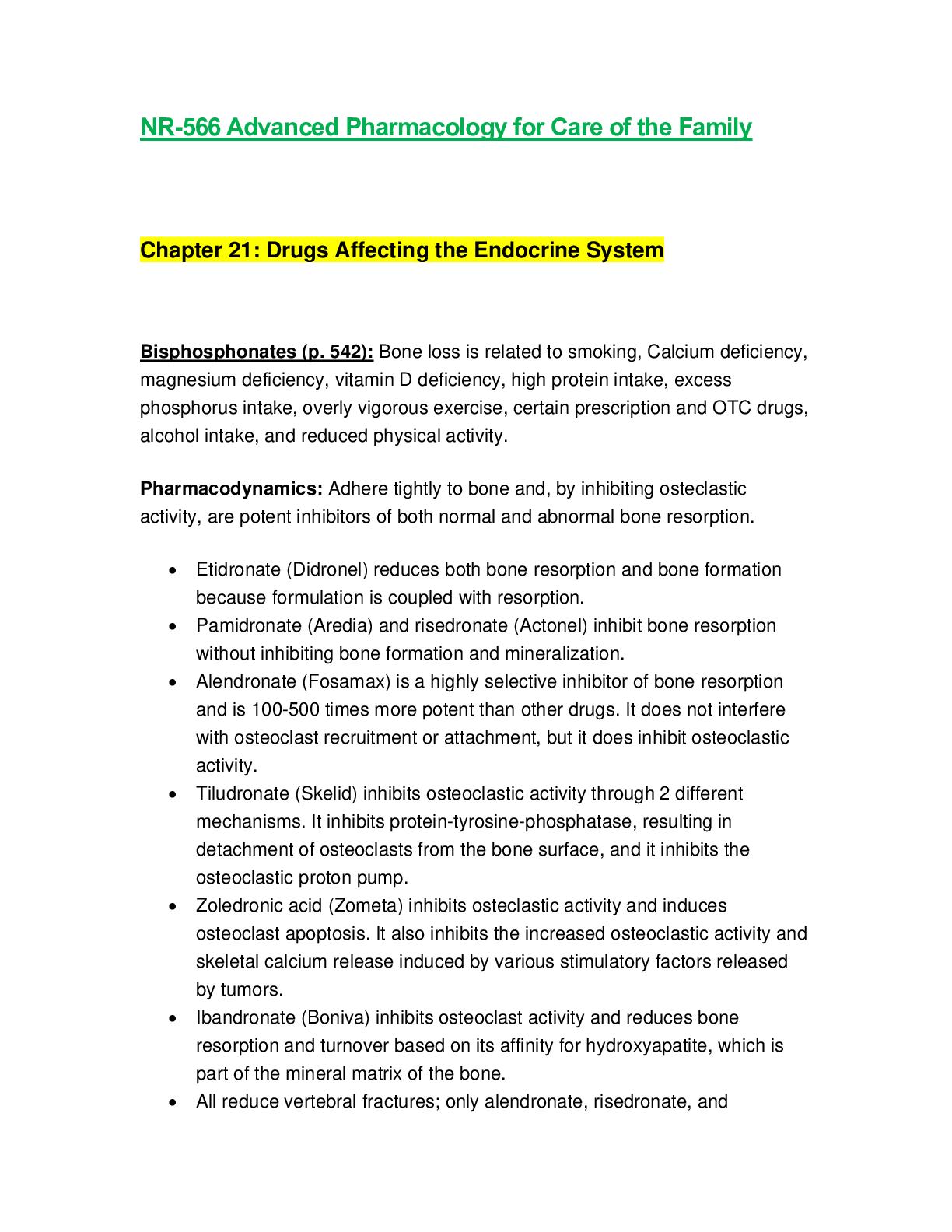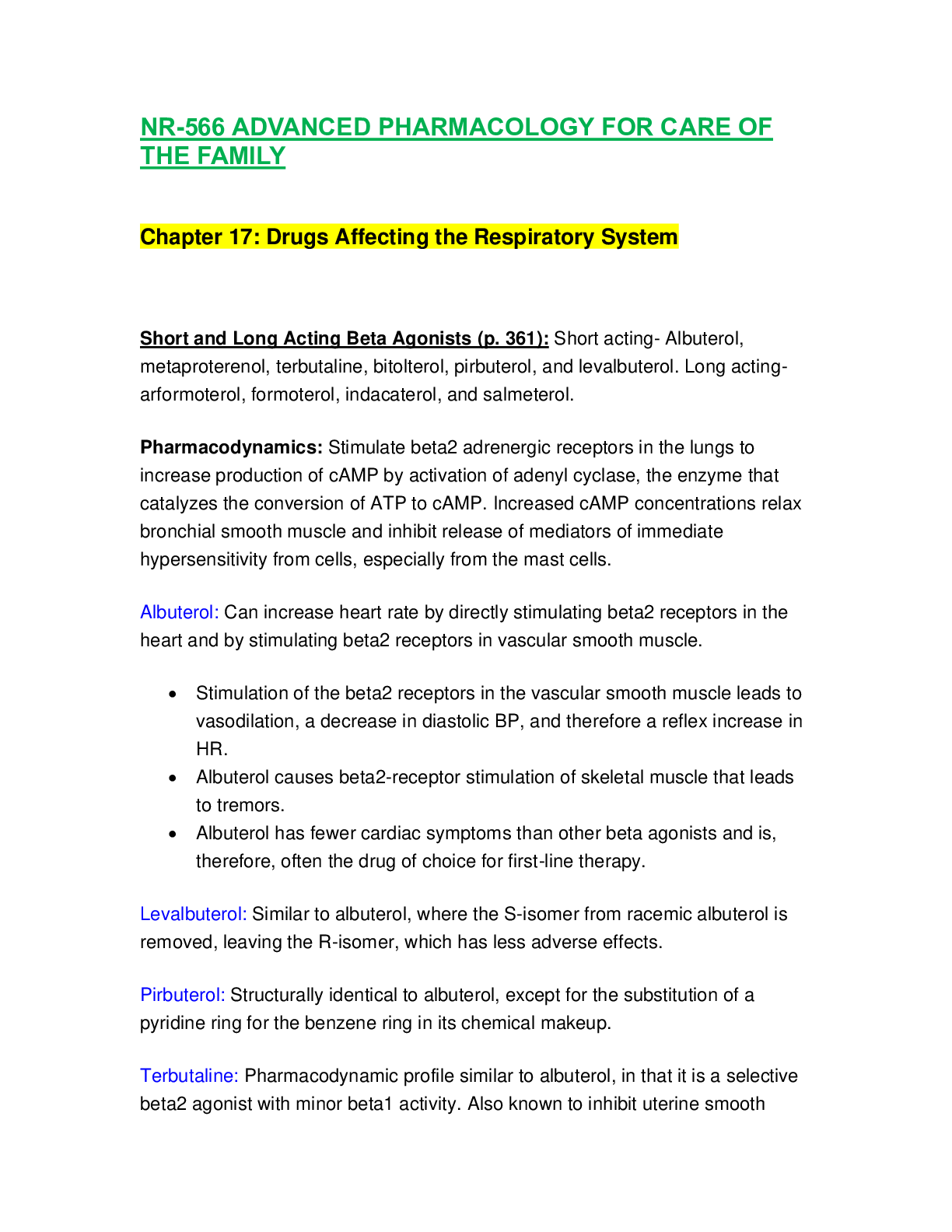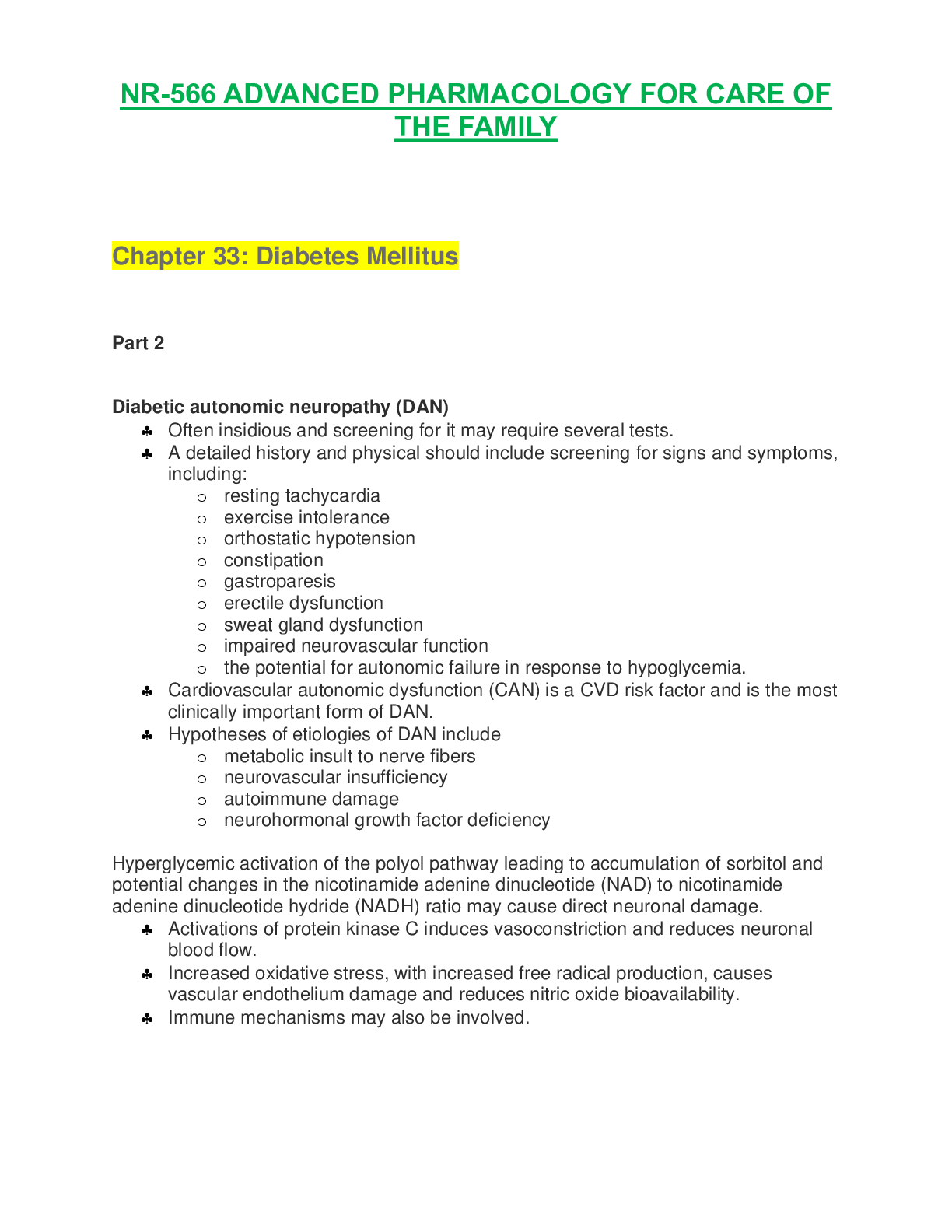*NURSING > Summary > NR 566 / NR566 Advanced Pharmacology for Care of the Family Week 1 Chapter 41 Notes| Hyperthyroidism (All)
NR 566 / NR566 Advanced Pharmacology for Care of the Family Week 1 Chapter 41 Notes| Hyperthyroidism and Hypothyroidism | Latest 2020 / 2021 | Chamberlain College
Document Content and Description Below
NR 566 / NR566 Advanced Pharmacology for Care of the Family Week 1 Chapter 41 Notes| Hyperthyroidism and Hypothyroidism | Latest 2020 / 2021 | Chamberlain College Introduction ❖ Thyroid disorders ... are among the most common disease processes seen in primary care ❖ Untreated thyroid disease can result in long-term complications in every body system, especially the cardiovascular system. ❖ Most thyroid disorders involve thyroid gland malfunction, but secondary hypothyroid or hyperthyroid issues can stem from pituitary axis interruptions. ❖ most common from age 20 to 40. ❖ In children and older adults, hyperthyroidism can produce cardiomegaly and heart failure. Elders are also at risk for osteoporosis. ❖ In adolescents, hyperthyroidism can interfere with normal growth because of alterations in basic metabolism. ❖ Untreated hyperthyroidism in pregnancy increases the risk for first-trimester spontaneous abortion, stillbirths, and neonatal mortality. ❖ both hypo and hyper more common in women ❖ hypothyroidism increases with age ❖ In children, hypothyroidism can result in decreased mental and physical growth. ❖ In adults, it increases the risk for heart disease related to altered lipoprotein metabolism. ❖ Treatment for these two disorders includes lifestyle management and drug therapy. ❖ Pharmacological management includes thyroid hormones to treat hypothyroid conditions and antithyroid agents such as propylthiouracil, methimazole (Tapazole), and radioactive iodine (I131) or strong iodine solutions for hyperthyroid states. ❖ Symptom management may also include other drugs ❖ The secretion of thyrotropin-releasing hormone (TRH) by the hypothalamus in response to cold, stress, and decreased levels of thyroxine (T4) stimulates the synthesis of thyroid-stimulating hormone (TSH) by the anterior pituitary. ❖ TSH, in turn, stimulates the thyroid gland to produce thyroid hormones. ❖ Thyroid hormones (T4 and triiodothyronine [T3]) are synthesized from iodine and tyrosine molecules by follicular cells in the thyroid gland. ❖ Dietary iodine of about 100 to 150 mcg/d is required for normal thyroid hormone production. ❖ The thyroid gland mainly produces T4. o About 20% of T3 is synthesized and released from the thyroid gland. o The remainder is converted from T4 to T3 peripherally when additional thyroid hormone is needed. o Conversion of T4 to T3 is stimulated by cold temperatures and stress. o Conversion is inhibited by acute and chronic illness, starvation, and some drugs ❖ The amount of active thyroid hormone in the plasma produces a feedback loop that inhibits or further stimulates TRH and TSH secretion to decrease or increase thyroid hormone production. Thyroid function tests ❖ most commonly used tests in primary care are TSH and free T4 values. ❖ Serum TSH measurement is the single most reliable test to diagnose the common forms of hypothyroidism and hyperthyroidism ❖ Subclinical conditions exist when TSH is normal but free thyroxine (FT4) and free triiodothyronine (FT3) are abnormal. ❖ Altered serum TSH confirms the diagnosis in all patients with primary hypo- or hyperthyroidism, but it will not reliably identify all hypothyroid patients with secondary (central) disturbances wherein TSH values may be atypically low, normal, or elevated. ❖ When pituitary or hypothalamic disease is suspected as the cause of hypothyroidism, FT4 concentrations should be measured in addition to TSH. ❖ When less sensitive TSH tests are the only ones available, FT4 and FT3 measurement can give additional information to validate the TSH ❖ Recommended pediatric target values for TSH range from 0.5 to 2.0 mUL and for T4 they range from 9 to 13 μg/dL ❖ Abnormal results from other laboratory tests may also suggest hypo- or hyperthyroidism. o Hypercholesterolemia, hyponatremia, anemia, elevated creatinine kinase and lactate dehydrogenase, and hyperprolactinemia all suggest possible hypothyroidism. o Elevated calcium, alkaline phosphatase, and/or hepatocellular enzymes suggest hyperthyroidism. o These laboratory findings justify thyroid function tests, especially if they are sustained for 2 weeks or more, occur in combination, or occur in patients with increased risk for thyroid disease ❖ Thyroid abnormalities can present with the development of enlarging thyroid tissues called goiters. [Show More]
Last updated: 1 month ago
Preview 1 out of 18 pages

Reviews( 0 )
Document information
Connected school, study & course
About the document
Uploaded On
Jan 07, 2021
Number of pages
18
Written in
Additional information
This document has been written for:
Uploaded
Jan 07, 2021
Downloads
0
Views
64

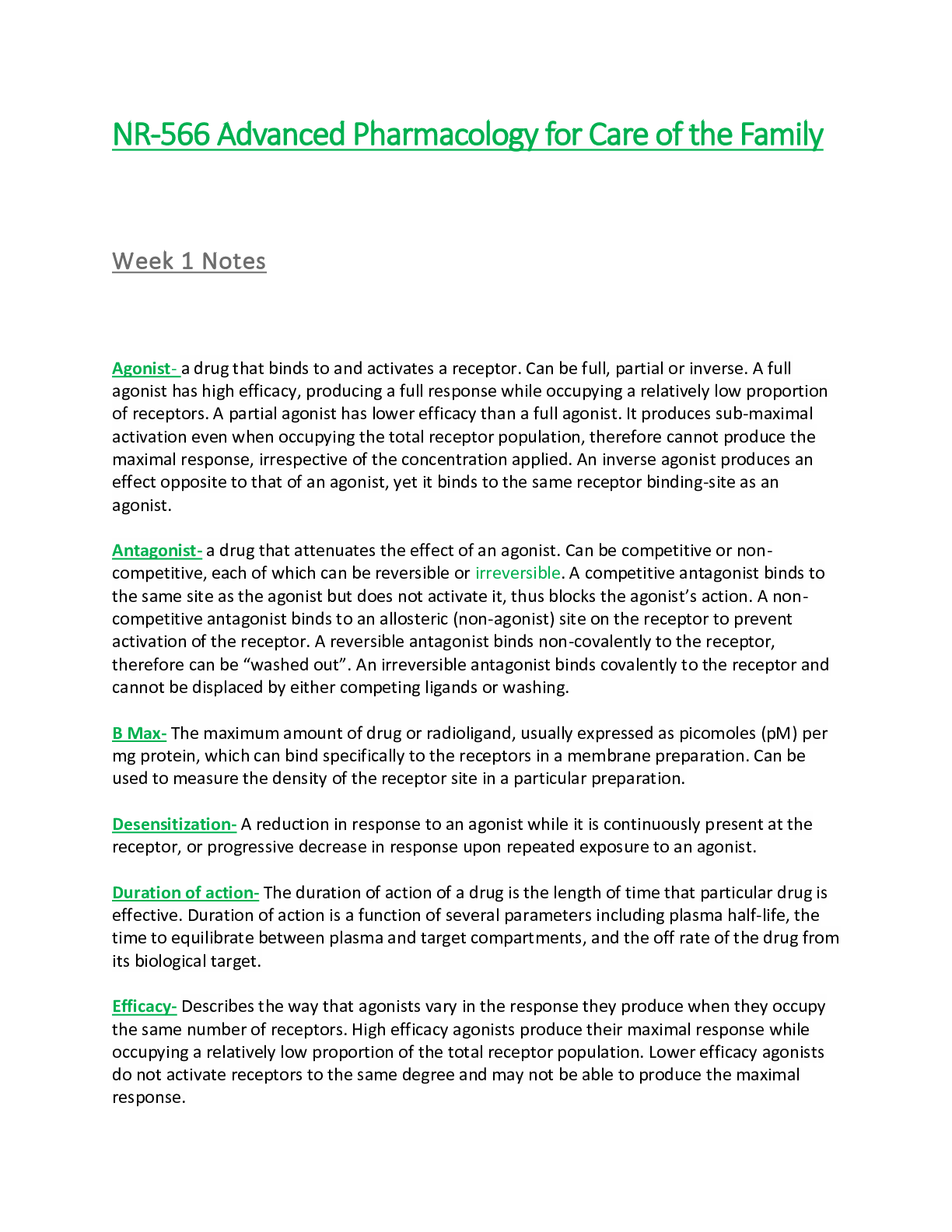
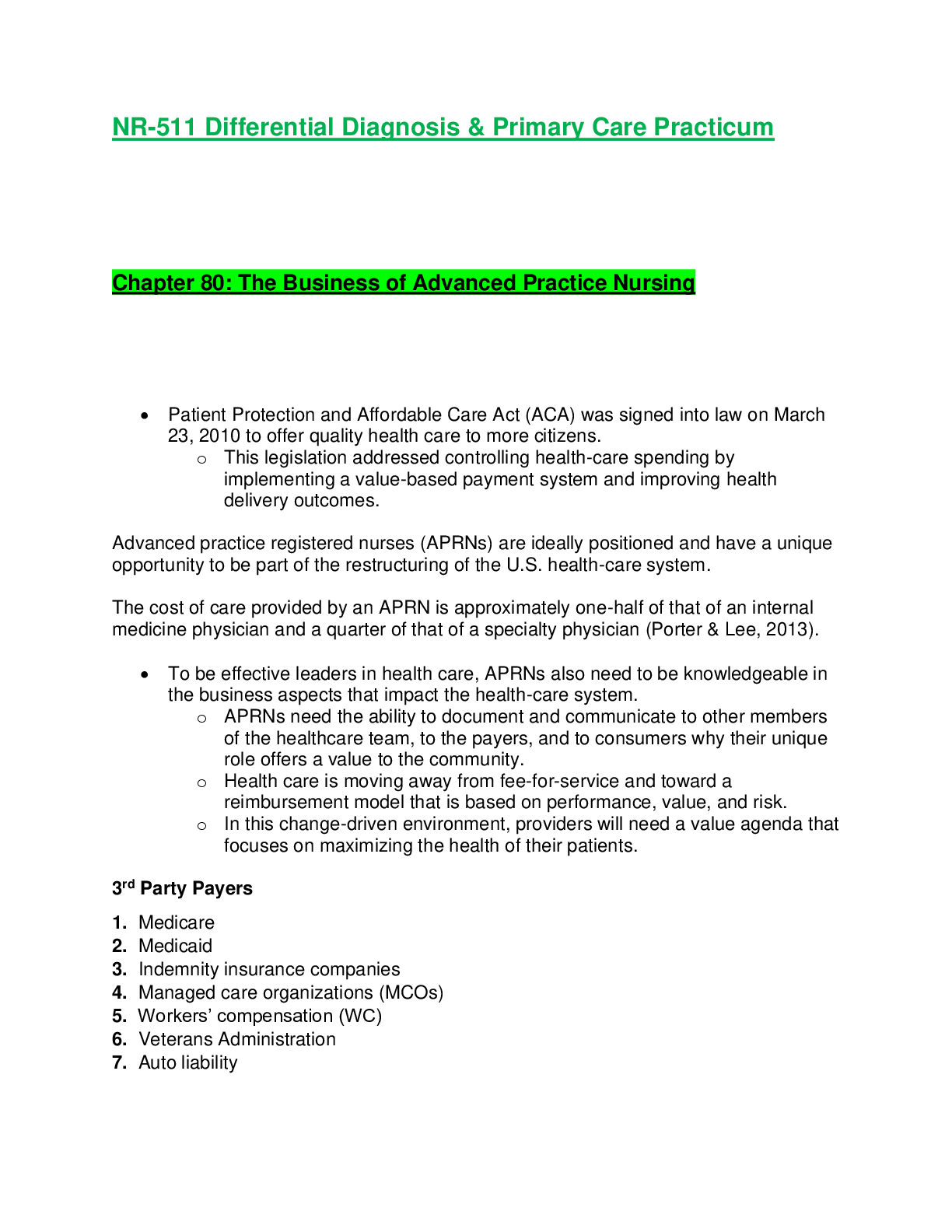


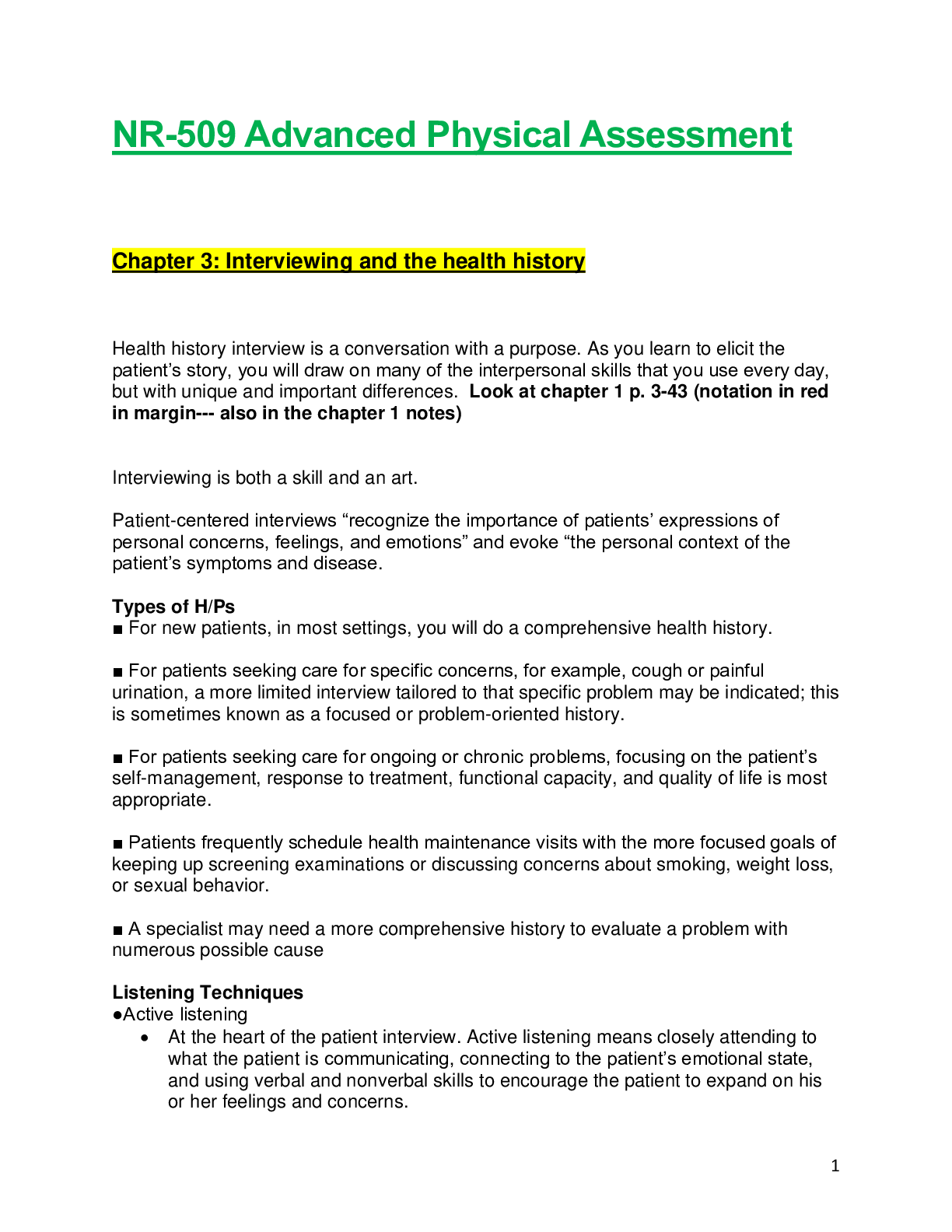

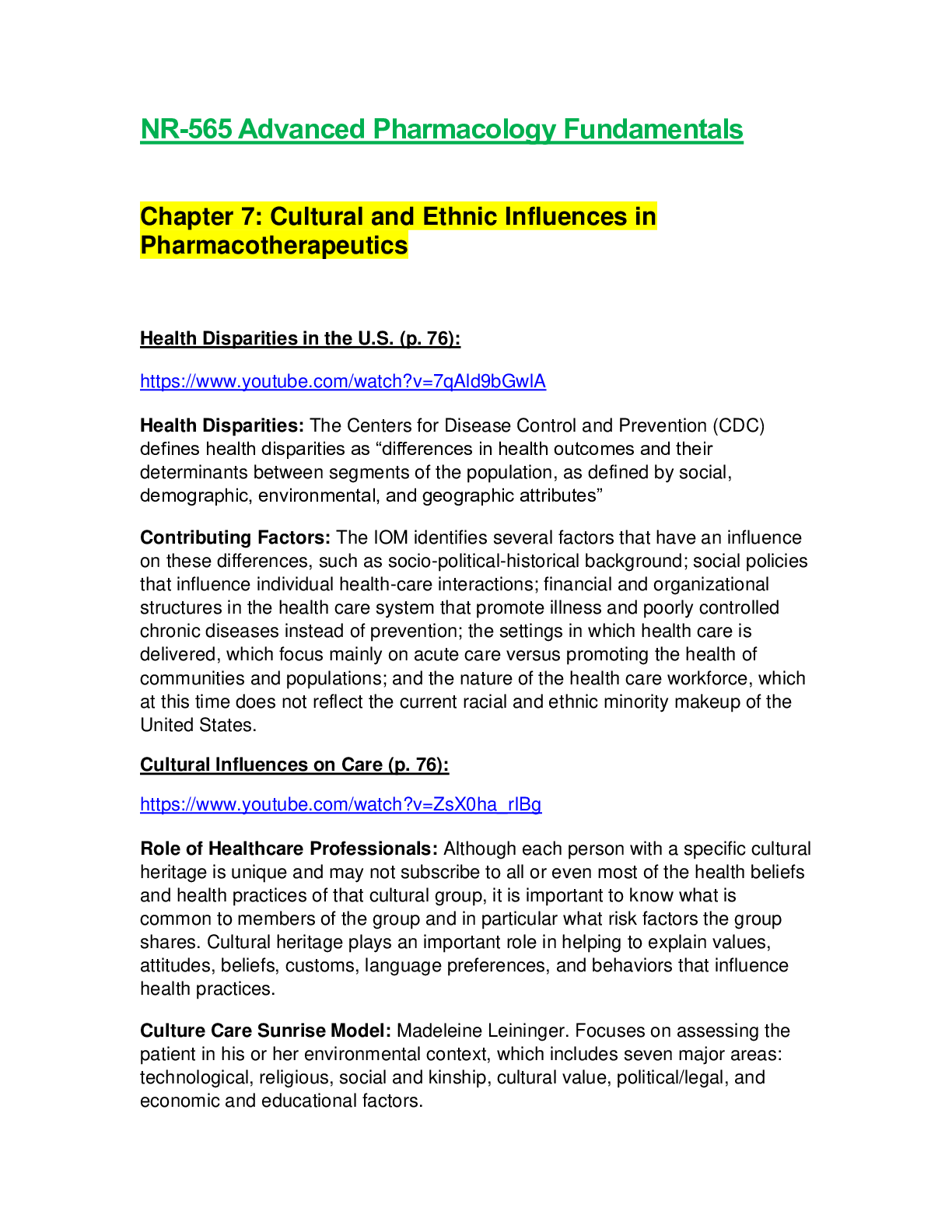
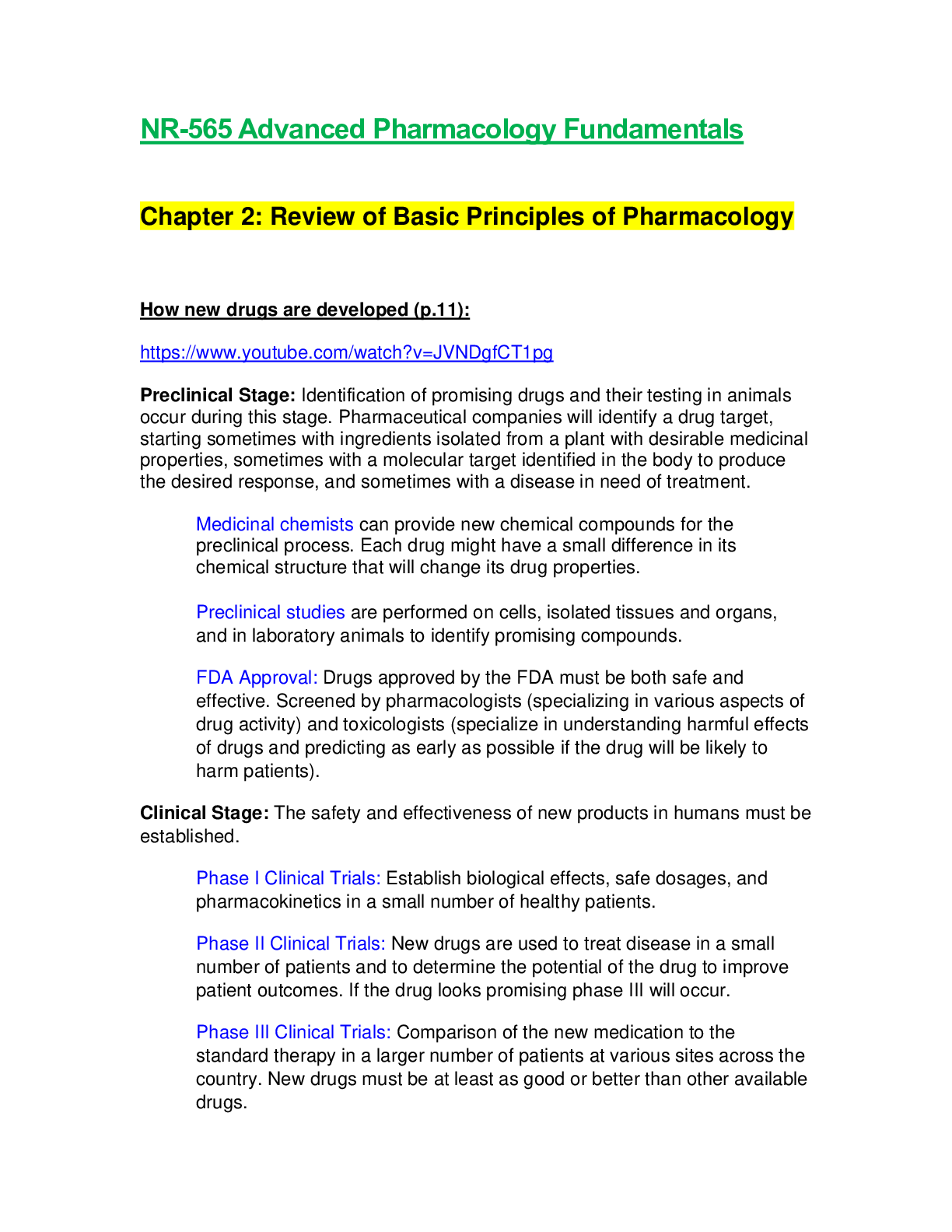




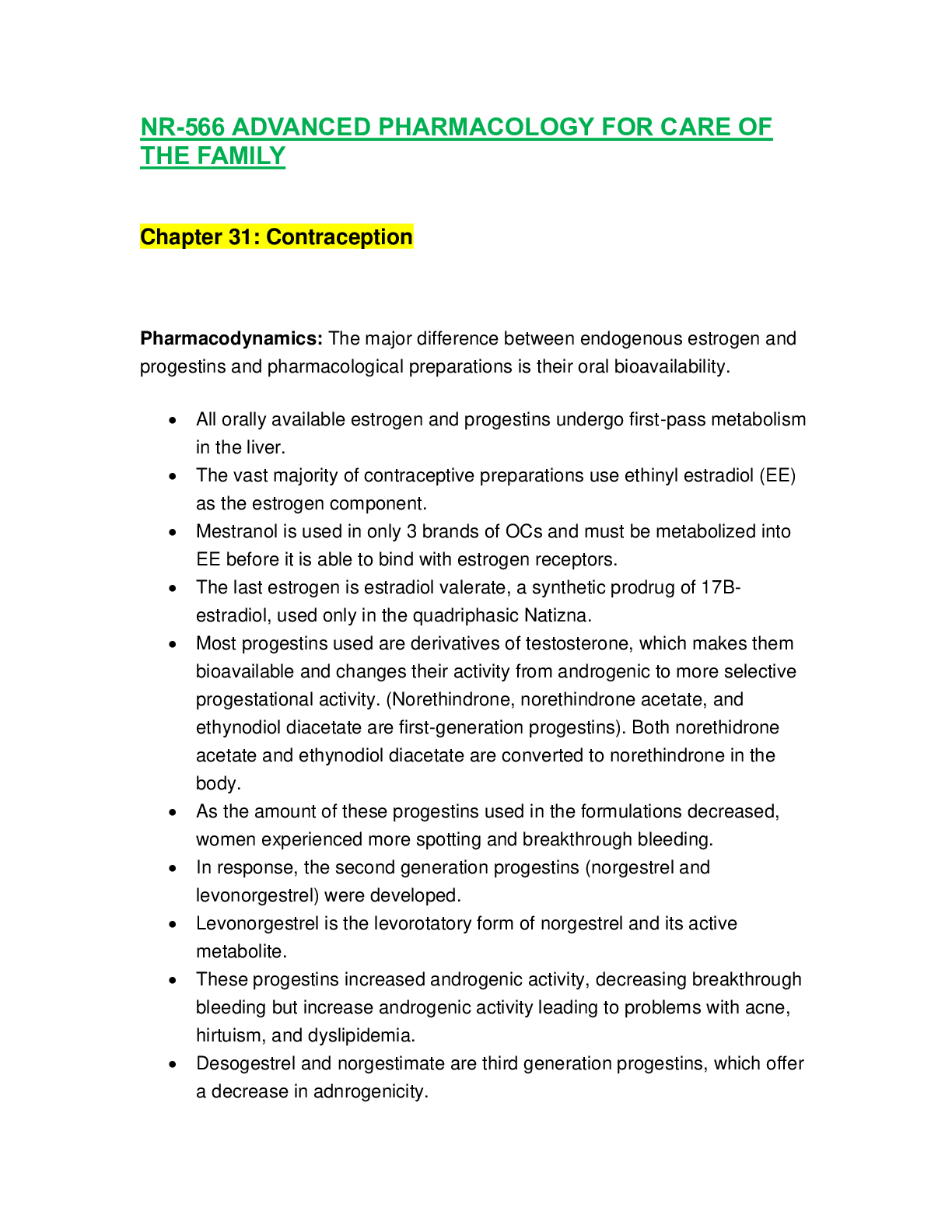
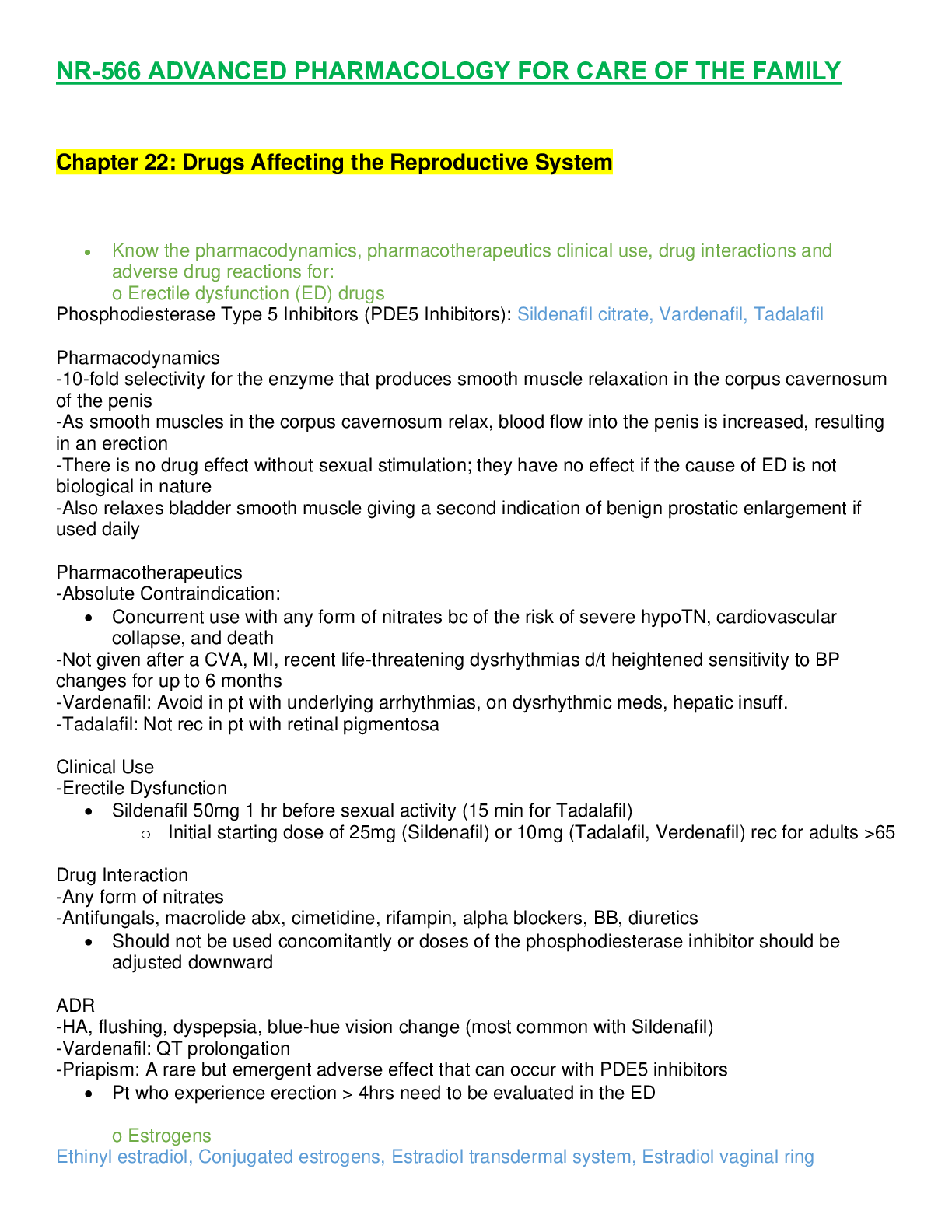

.png)
